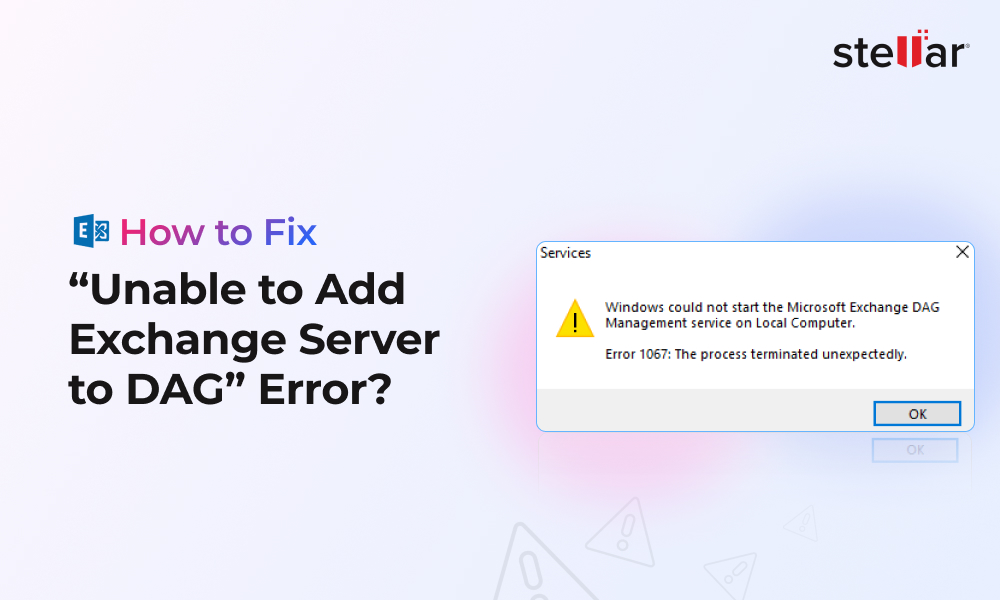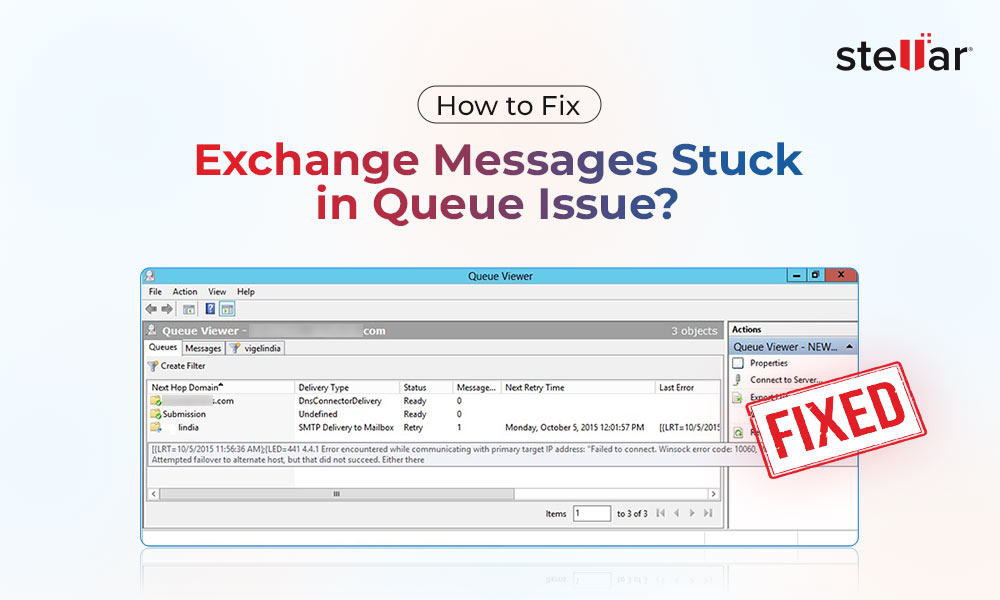You can use several backup solutions with both on-premises Microsoft Exchange Server and Exchange Online (Microsoft 365). Veeam Backup & Replication is one such software solution that you can use to backup and restore Microsoft Exchange data on virtual machines. In this article, we will be going through the process of restoring Exchange Server backup using the Veeam Backup and Replication software.
Why you need to restore Exchange Server from Backup?
There are a lot of things that could happen to an Exchange Server which require you to restore the server and data from backup. Below are some common ones:
- Hardware failure can either corrupt or damage the transaction logs or the database.
- Failed or interrupted Cumulative Updates (CU) can render the Exchange Server unusable with services not starting and not functioning well.
- Installing and using applications, such as antivirus, anti-malware, etc., which are not application-aware or compatible with the currently installed Exchange Server version. This could lock the database files and possibly corrupt them.
- Sudden loss of power or a fault in the electricity system will not allow the database to shut down properly and can damage the data.
- There is an issue on the newer Exchange Server or Exchange Online, post migration.
- Malware infection on the server.
What should you do before restoring the Exchange Server?
Before restoring the server from backup, it is recommended to do the following:
- Inform the users and other stakeholders about the maintenance window and the expected downtime.
- Ensure there are enough resources, including storage and bandwidth, to accommodate a quick and crucial restore.
- Review the recovery plan document to see if it is fully updated with all the contacts of admins, responsible people, and vendors.
Stepwise Process to Recover Exchange Server using Veeam Backup
To recover the Exchange Server using Veeam Backup, follow the below process.
Note: The Exchange Server should be a virtual machine residing on a Hyper-V server infrastructure with a management server, having Veeam Backup & Replication software installed.
Step 1 – Launch Veeam Backup and Replication
Open the Veeam Backup and Replication software. Once it is open and logged successfully, navigate to the Home tab and click on Backups.
Step 2 – Locate the Backup
Next, locate the backup of Exchange Server. You need check the Disk (or Tape) Backups to find the name of Exchange Server. Right-click on the backup job and click on Restore.
Step 3 – Select the Restore Type
Now, you need to assign the restore type to ensure that the application selection of Exchange Server is selected. This is important to ensure that the data and server are intact after the restore. In the selection, make sure to choose Microsoft Exchange under the Application Items. This will open the Veeam Explorer for Microsoft Exchange.
Step 4 – Choose the Correct Restore Point
You can see a list of previous backups. You can select the appropriate restore point to restore from. This will mount the virtual database.
Step 5 – Restore the Database or Items
After the selection is made, the next step is to restore to the original location, if all the data is being restored. If you want to restore only specific mailboxes or items, you need to use Restore to a new location or Export to PST file.
Step 6 – Verify the Process
After the data is restored, you need to do the validation checks. You need to verify if the databases are active and the users are able to access their resources, if the server is running. A full test of the Exchange Server should be conducted to ensure that mail flow is fine.
An Alternative Solution to Recover Exchange Server Database
If there is an issue with the Exchange Server, you can rebuild the server. However, the major challenge is recovery of data. Restoring from backup would result in data loss. If the database is corrupted, you can use ESEUtil commands to perform a soft or hard recovery. But the recovery time could take a long time, a lot of resources, and there is no guarantee of success. You can overcome such challenges by using Stellar Repair for Exchange – a specialized Exchange repair tool that can help in reducing the recovery time and also guarantee the success.
With this tool, you will be able to open databases of any version of Exchange Server, of any size, and in any state. After a quick or deep scan, you will be able to granularly export the user mailboxes, user archives, shared mailboxes, disabled mailboxes, and public folders to PST and other formats. You can also easily export the database items directly to a live Exchange Server database or Microsoft 365 with automatic mailbox matching.
Conclusion
Above, we have explained the complete process of restoring an Exchange Server from backup using the Veeam Backup and Replication software. It’s important that when you face a problem with your Exchange Server, do not jump to conclusion and go directly to restore the server without proper investigation. You can also try third-party Exchange recovery tools that can help in recovering the database with no data loss, irrespective of the situation.













 6 min read
6 min read





